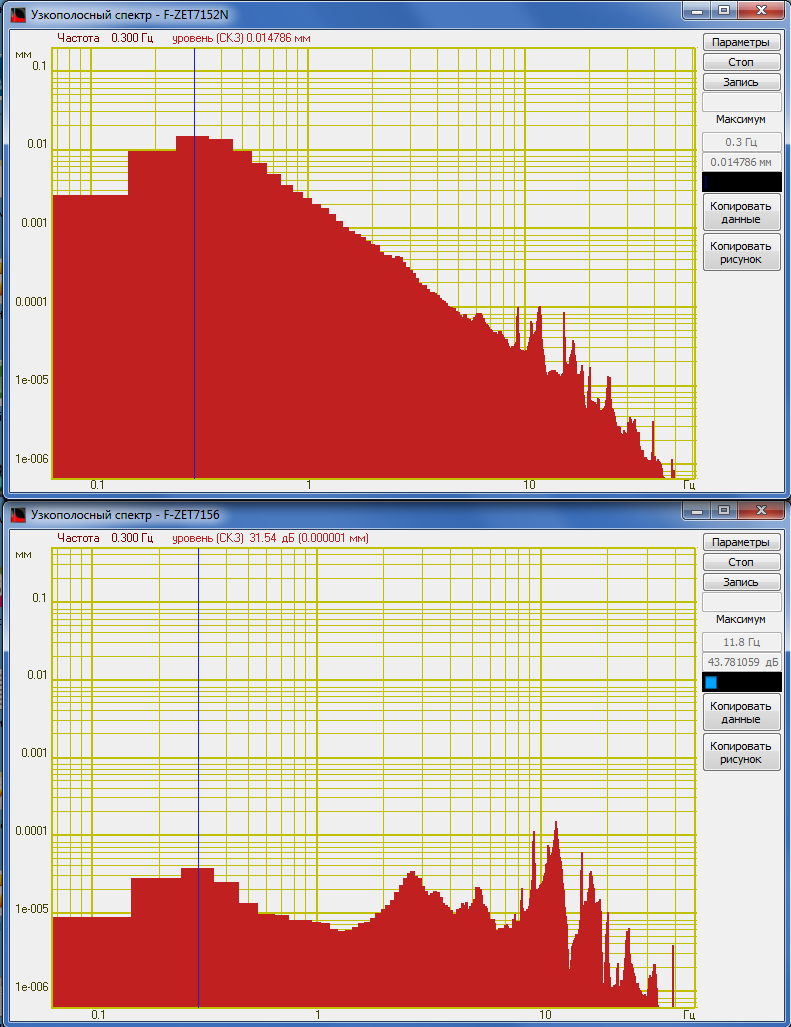Vibration control, monitoring and diagnostics system for hydraulic units is scalable and has distributed structure.
The sensors are mounted in the control points of hydraulic turbine and are united into measuring lines. The hydrophones are installed into the lid of hydraulic unit turbine, vibration velocity transducers – at the blades of guiding unit, seismic sensors – near the bearings (3 sensors per each bearing), cavitation sensors and hydrophones – near the entrance hatchway.
Then the measuring lines are equipped with interface converters, providing data transfer from digital sensors to the server via Ethernet interface and further data archive storage. One or more measuring lines are further united into data acquisition nodes equipped with interface converters ZET 7176, synchronization modules ZET 7175 for controllers system time and server time synchronization, flash modules ZET 7173, and, if necessary, with wireless data transfer modules ZET 7177.
Digital sensors have metrological self-check function, which enables in-place verification of the devices within the scope of the measuring system, which guarantees stable performance and high precision of the measured data obtained.
Information from data acquisition nodes is also transferred to work station, where data processing and visual representation is performed.
Work station has a user-friendly system of events notifications for the operator.

